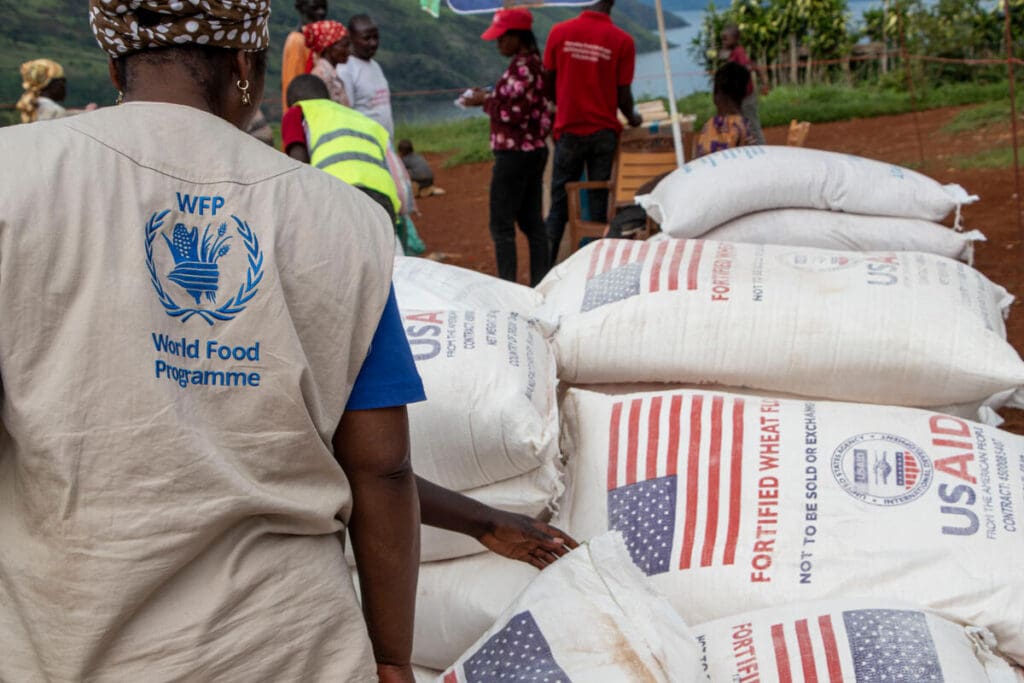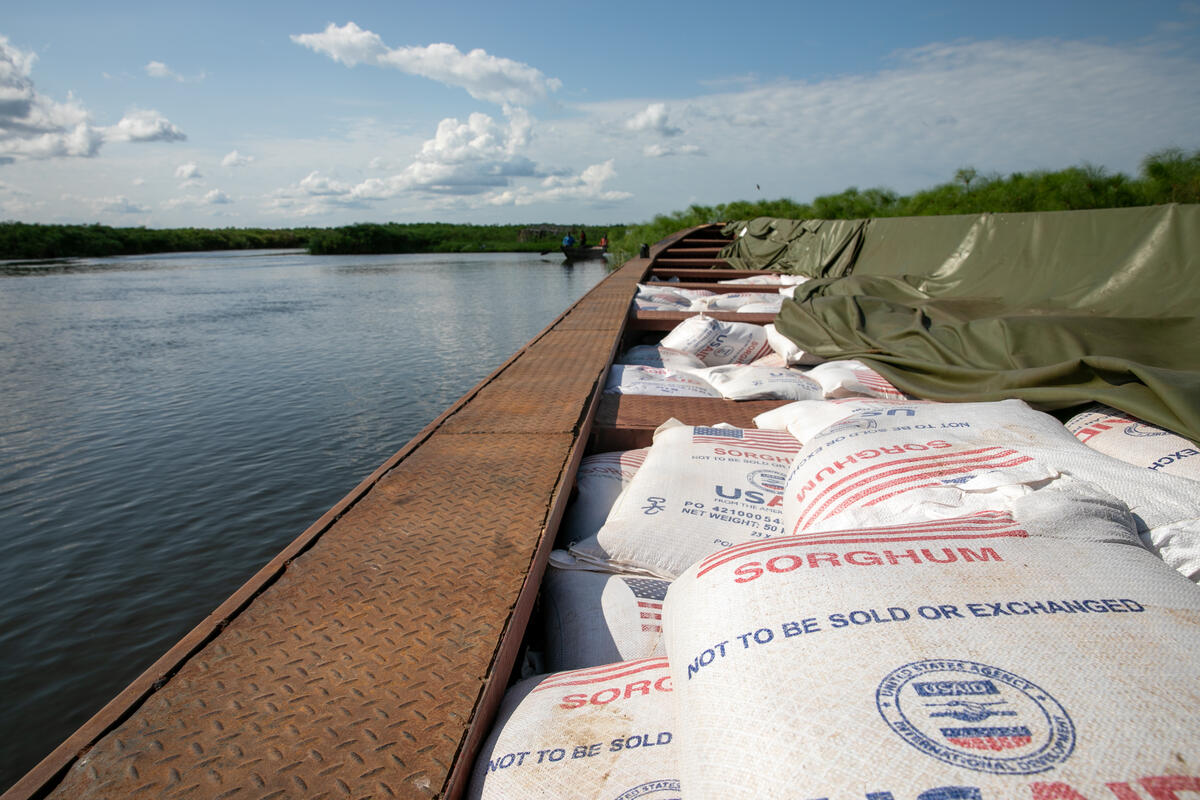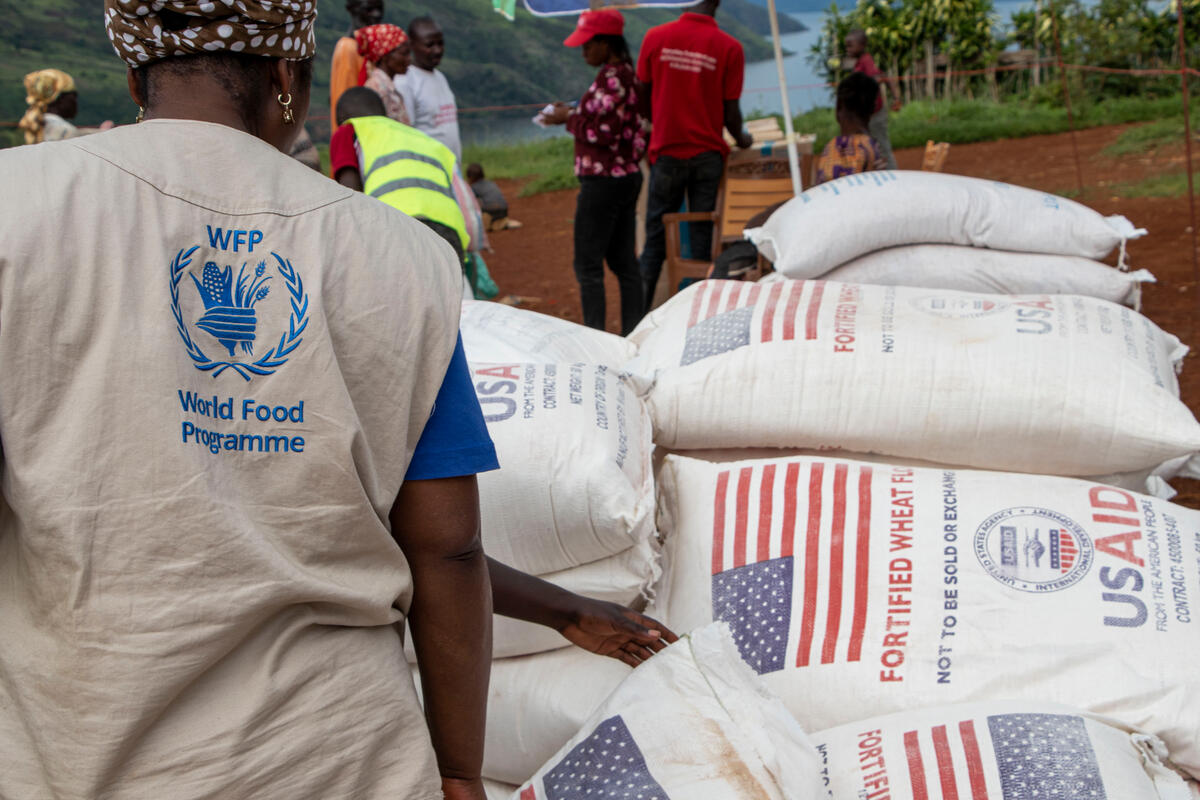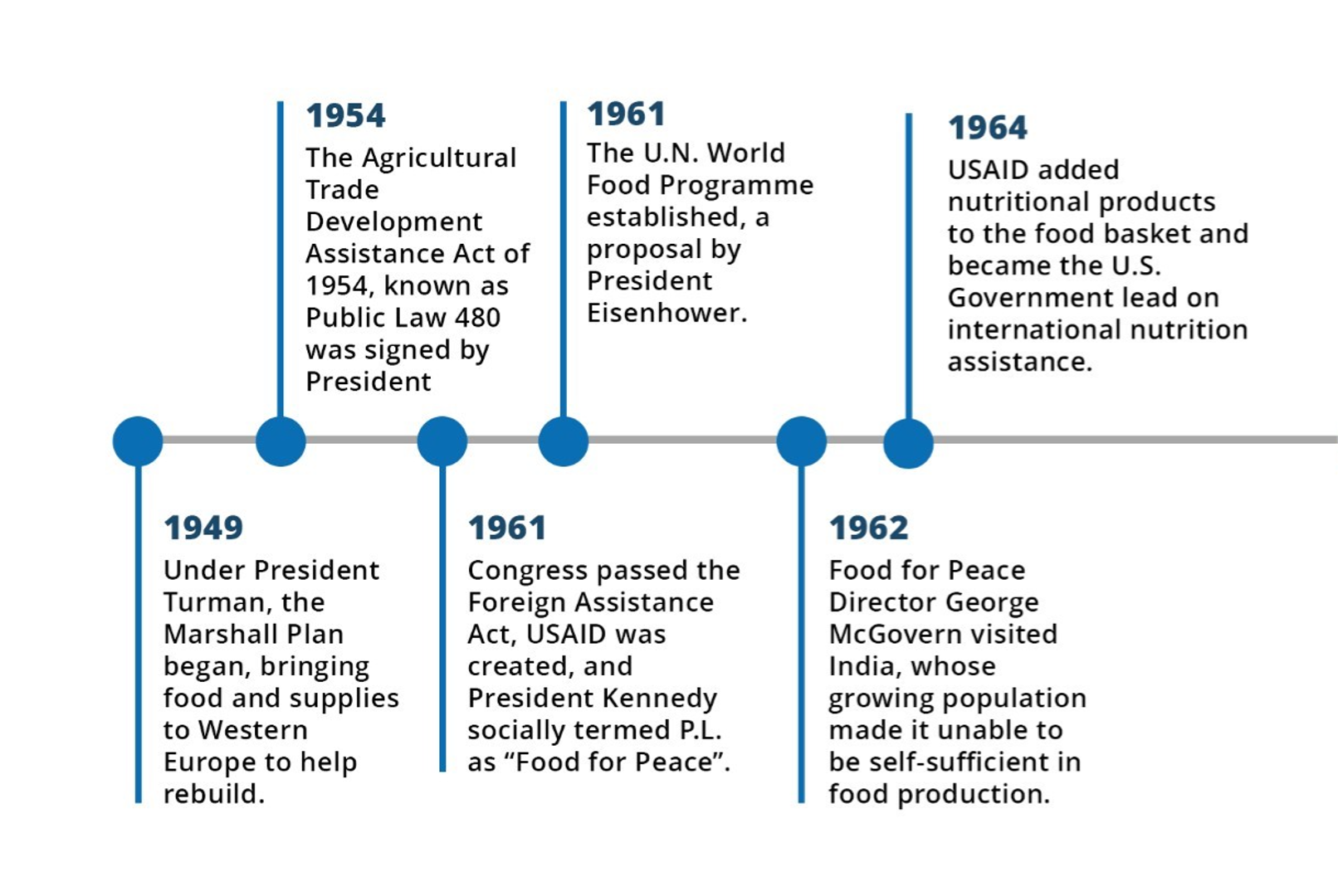How the U.S. Leads the Fight Against Global Hunger: Food for Peace and In-Kind Food Assistance

In response to hunger emergencies, the United Nations World Food Programme (WFP) draws on a diverse toolkit of assistance to save lives and rebuild economies. That toolkit includes cash, debit cards, vouchers, school meals and specialized nutrition support. Assistance may even come in the form of business training or crop insurance for farmers or support to government entities to manage their own anti-hunger programs.
Having a wide range of assistance to choose from is critical for organizations like the U.N. World Food Programme as it responds to different emergencies. Yet, amidst a range of possible solutions and new technologies, there is still one pillar of support that has long endured and remains critical for responding to emergencies: in-kind food assistance.
The U.S. Provides In-Kind Food Assistance Globally
The United States is the single largest donor to the U.N. World Food Programme, providing nearly half of all contributions received by the organization in a typical year. The U.S. provides that assistance through three main programs:
- The Title II Food for Peace Program
- Emergency Food Security Program
- McGovern Dole Food for Education Program
The Title II Food for Peace Program is the United States’ longest standing permanent program for providing international in-kind food aid. The program is administered by the United States Agency for International Development (USAID). In 2022, the U.S. provided nearly 4 billion pounds of American-grown food to 58 million people through the Food for Peace Program, and much of it was received and distributed by the U.N. World Food Programme.
Let’s take a closer look at the history and purpose of Food for Peace.

The Food for Peace Program is administered by USAID and provides American-grown food to people around the world.
Food for Peace Paves the Way for WFP
The Food for Peace Program originated from the efforts of President Dwight Eisenhower and his administration. In the early 1950’s, the U.S. had a surplus of food commodities due to new agricultural technologies and farmers ramping up production to meet wartime demands. The Eisenhower administration saw an opportunity to put these surpluses towards efforts to rebuild food systems and combat hunger abroad after the war. His administration passed a series of policies that included granting U.S. grown commodities as humanitarian aid, selling goods via credit financing in local currencies, and reinvesting profits garnered by commodity sales in local infrastructure abroad. The policies were codified into law when President Eisenhower signed the Agricultural Trade Development Assistance Act, or Public Law 480, in 1954. The law was later coined “Food for Peace” by President Kennedy. The Food for Peace Program would shape the destiny of the U.N. World Food Programme itself.

Today, WFP is the world’s leading humanitarian organization and provides food assistance to over 100 million people.
In 1960, President Eisenhower spoke to the U.N. General Assembly and advocated for an international version of the Food for Peace Program saying, “The United States is already carrying out substantial programs to make its surpluses available to the countries of greatest need. My country is also ready to join with other members of the United Nations in devising a workable scheme to provide food to member states through the United Nations system, relying on the advice and assistance of the Food and Agriculture Organization (FAO). I hope this assembly will seriously consider a specific program for carrying forward the Food for Peace Program.”
One year later, Director of the Food for Peace Program George McGovern followed in Eisenhower’s advocacy footsteps by submitting a proposal to FAO for a three-year in-kind food assistance arm of the agency. The proposal was accepted, and the U.N. World Food Programme was established.
By 1965, the organization proved so effective — and necessary — that it was made permanent. The U.N. World Food Programme became a separate entity from FAO and grew into one of the most prominent humanitarian agencies in the world.

The U.S. has a long legacy of leading the global fight against hunger.
In-Kind Food Assistance Is Vital to WFP’s Emergency Response
Today, the Food for Peace Program remains central to the American response to global hunger, and it benefits from a strong base of support from American farmers and commodity producer groups. Food for Peace provides tens of millions of pounds of American commodities to the U.N. World Food Programme each year. These commodities are grown and purchased from dozens of states across the country. That means the program supports the U.S. farm economy while simultaneously helping the U.S. respond to hunger emergencies around the world. A typical WFP food basket delivered through the Food for Peace Program contains grains, beans or lentils, and vegetable oil fortified with vitamin A and D.
Food assistance like this is critical due to the changing nature of hunger emergencies around the world. Modern emergencies tend to be complex, driven by more than one factor such as conflict, a climate disaster, a collapsed government system and/or economic crisis. They also tend to be protracted (marathons, not sprints), which means communities need food assistance over long periods of time. For example, protracted conflicts destroy roads, markets and other critical infrastructure and render cash-based assistance more difficult to administer. In these types of emergencies, where people cannot purchase or cook food, in-kind food assistance is necessary and appropriate to sustain communities.
In-kind food assistance programs like Food for Peace have withstood the test of time, proving their efficacy and importance to bolstering global food security. Even as the toolkit of humanitarian assistance evolves and expands, this type of assistance remains critical to ensuring individuals and families have the food they need to survive.
###
Through the Food for Peace Program, the U.S. laid the foundation for the U.N. World Food Programme. Learn more about the role of the U.S. in global food security.




